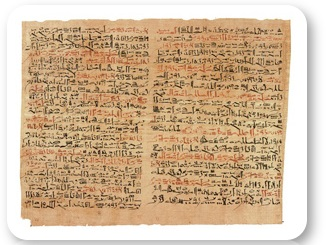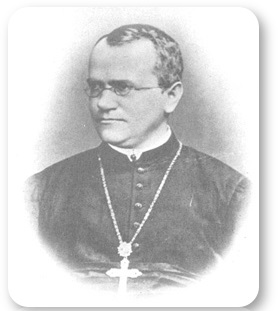Unit 1: Lesson 2: The History of Health Sciences
Lesson 2: The History of Health Sciences

Lesson 2: The History of Health Sciences
The history of health sciences could be said to have started with the first humans. Humans have always dealt with illnesses and death. They have tried to prevent both of these and wanted to understand them when they happened. Out of this, humans began applying early science examples to illnesses. Although prehistoric knowledge of medicine and health care was rudimentary compared to today's knowledge, ancient peoples used herbs and other plants to treat various diseases. Likely, these treatments developed out of trial and error, and the knowledge of what worked was passed down from generation to generation.
Edwin Smith Papyrus
Ancient societies built on these early forms of medicine and health care. Although many of their beliefs about illness and death were wrapped up in superstition and religion, individuals began to learn more about the body and what affected it. The earliest known surgery took place in ancient Egypt in 2750 BCE. The Edwin Smith Papyrus, discovered by Egyptologist Edwin Smith, is an ancient medical text dating to 1500 BCE. The text details over forty cases of injuries, examination processes, and treatments. Some treatments discussed include sutures (stitches), bandages, and using honey to combat infection. The text also shows some understanding of how injuries could affect other areas, such as brain injuries causing paralysis.
Egypt was not the only ancient society exploring medicine and the human body. Scholars have found medical writings from ancient India, China, Mesopotamia, Greece, and Italy. The writings show evidence of these ancient peoples using herbs and plants for medicinal purposes. The ancient Chinese placed a high value on the links between spirit and body, which formed the basis of today's holistic approaches to medicine and health care. The ancient Greeks, particularly Hippocrates (the Father of Medicine), were among the first societies to believe that spirits or other supernatural beings did not cause illnesses but were triggered by natural causes. Ancient Romans took information from the Greeks on how cleanliness could impact health, and they built sanitation systems to bring clean water to cities and remove unclean water and waste.
During the Middle Ages, medical practice and knowledge became more localized in Europe. Medical practices were used alongside folk remedies and treatments, often at religious institutions such as monasteries. Islamic societies also continued their push to understand aspects of anatomy, pharmacology, and surgery. They translated medical texts from ancient Greece, and Islamic physicians set up some of the world's first real hospitals.
During the Renaissance period in Europe, he witnessed the revival of science, including health science. One of the factors in this was the broader use of human dissection. During earlier periods, dissection was prohibited in some areas of the world, although non-human dissection still occurred. For example, England prohibited dissection until the 16th century. However, as the Renaissance encouraged experimentation and scientific knowledge, dissection increased the knowledge of human anatomy and disease. Leonardo da Vinci used dissections to understand the anatomy of human beings better, for example, and he used this knowledge in his drawings of people. Andreas Vesalius, a Flemish physician, is sometimes credited as the father of modern human anatomy; he helped create modern neurology by studying the brain's anatomy (although little was known then about how the brain functioned). Medications remained limited, with opium and quinine as the two main options, and folk 'cures' were commonly used even though many of them were potentially dangerous.
As technology advanced and people began studying various aspects of the human body, advances were made in other health-related sciences. Antonie van Leeuwenhoek first observed bacteria in 1676 with the help of a microscope. This began the field of microbiology and the study of bacteria. Physicians and scientists increased their knowledge of human anatomy during this era, and many scientific associations that encouraged the study of human anatomy and health were founded. In addition, inventions such as the printing press allowed physicians and other health science professionals to spread knowledge of human anatomy, diseases, and health to other medical professionals and the general public.
Gregor Mendel
What we think of as modern health sciences developed in the 1800s. Advancing technology and emphasizing scientific experimentation and study pushed discoveries in human health, functioning, and disease. Studies by Charles Darwin and Gregor Mendel in the mid-1800s led to the foundations of genetics. A century later, a team of researchers in the UK discovered the structure of DNA.
These multiple branches of investigation and research developed a greater understanding of diseases and treatments. The bacteria that caused cholera were identified, and health science professionals worked on finding cures for many other diseases. Diagnostic tools such as x-rays and electrocardiographs increased, and medications such as penicillin and other antibiotics were developed and used. By the 1950s, physicians were also successfully transplanting organs from one person to another.
From this historical foundation, the health science field has grown and become an increasingly important part of our everyday lives. While there have been many changes in this field since ancient times, our curiosity about the functions of our bodies and the drive to cure illnesses has remained the same. Health science professionals continue to use and improve upon the discoveries and knowledge that earlier researchers and scientists gave us.
What is Health Science
